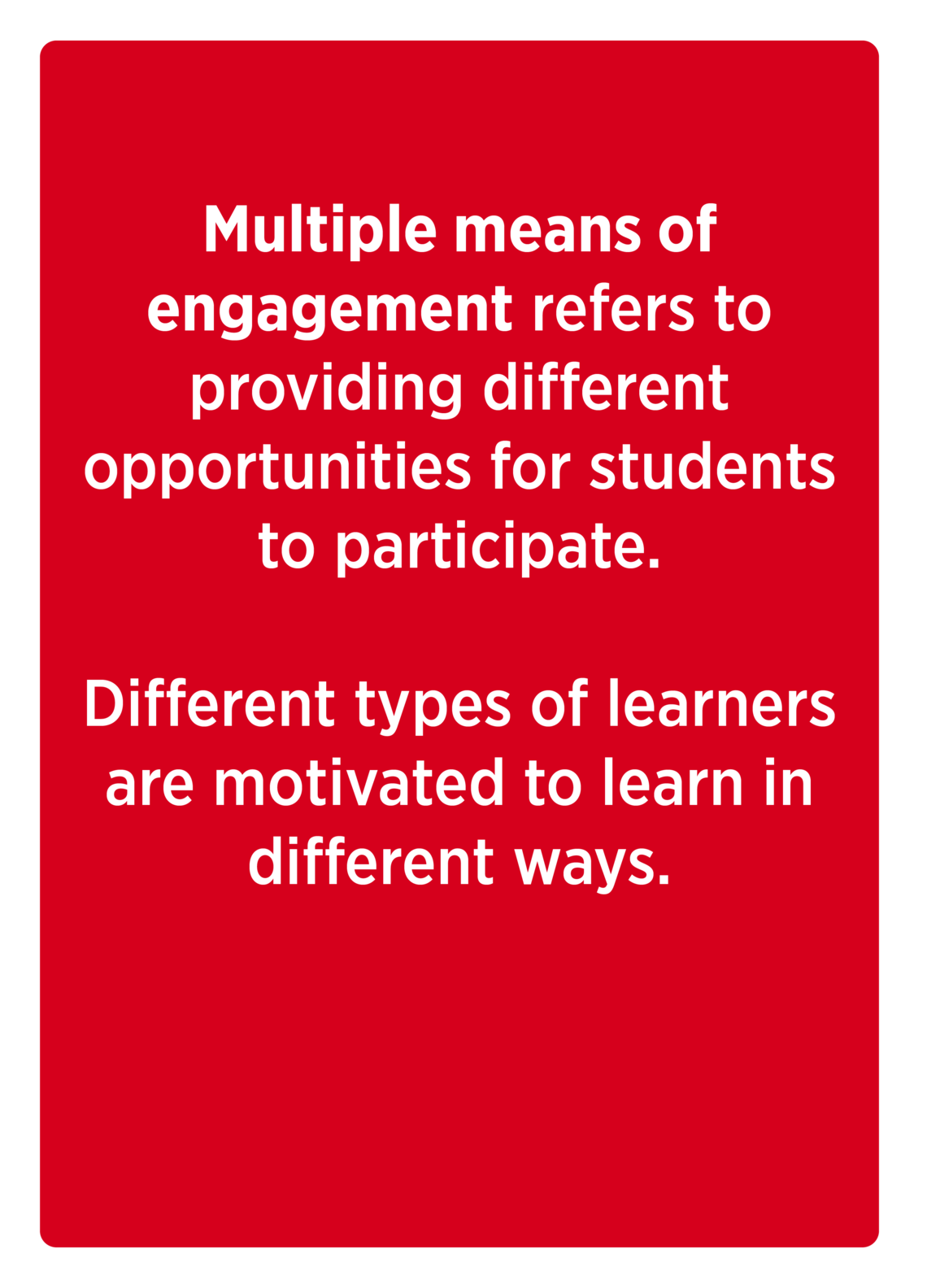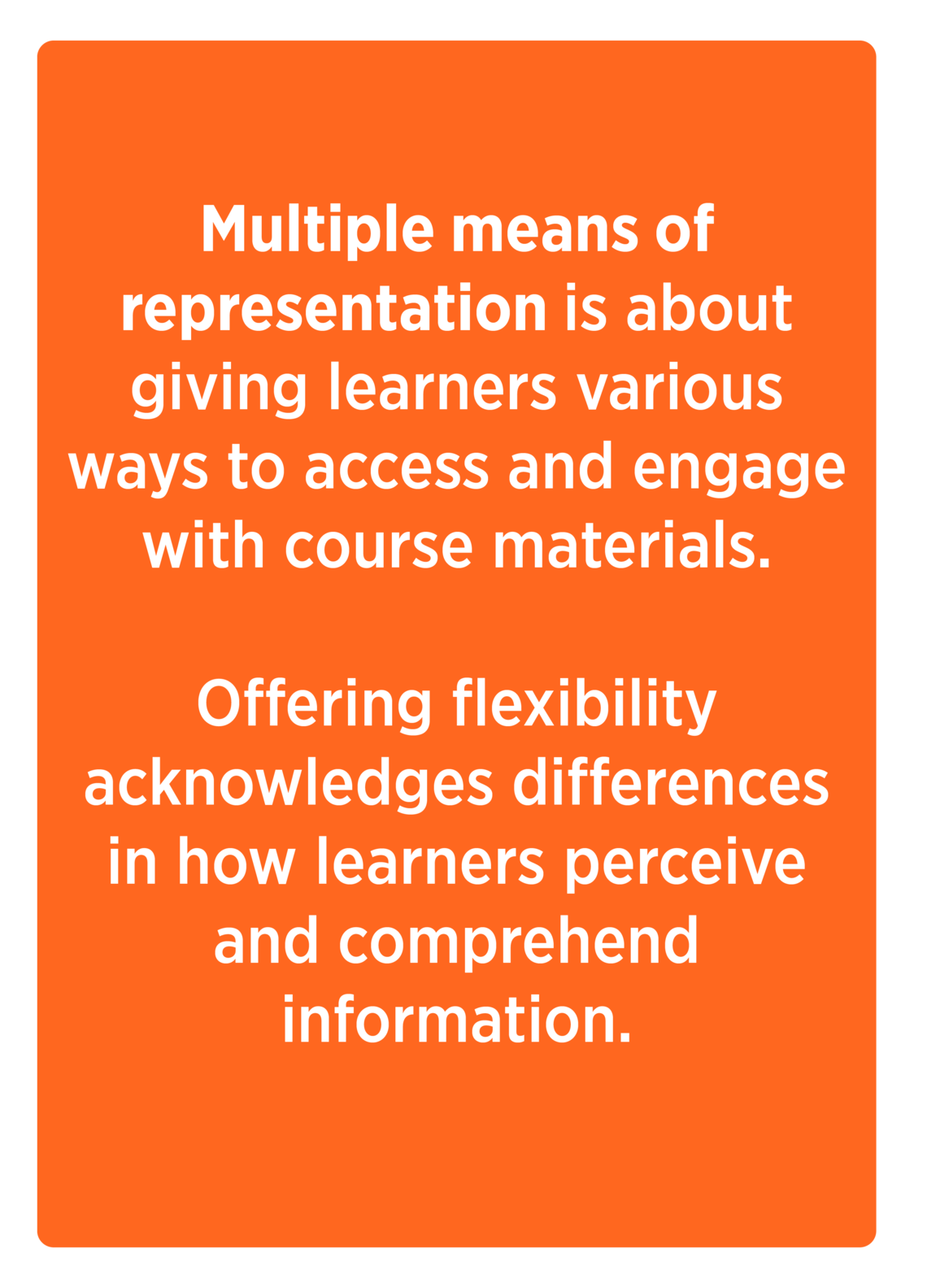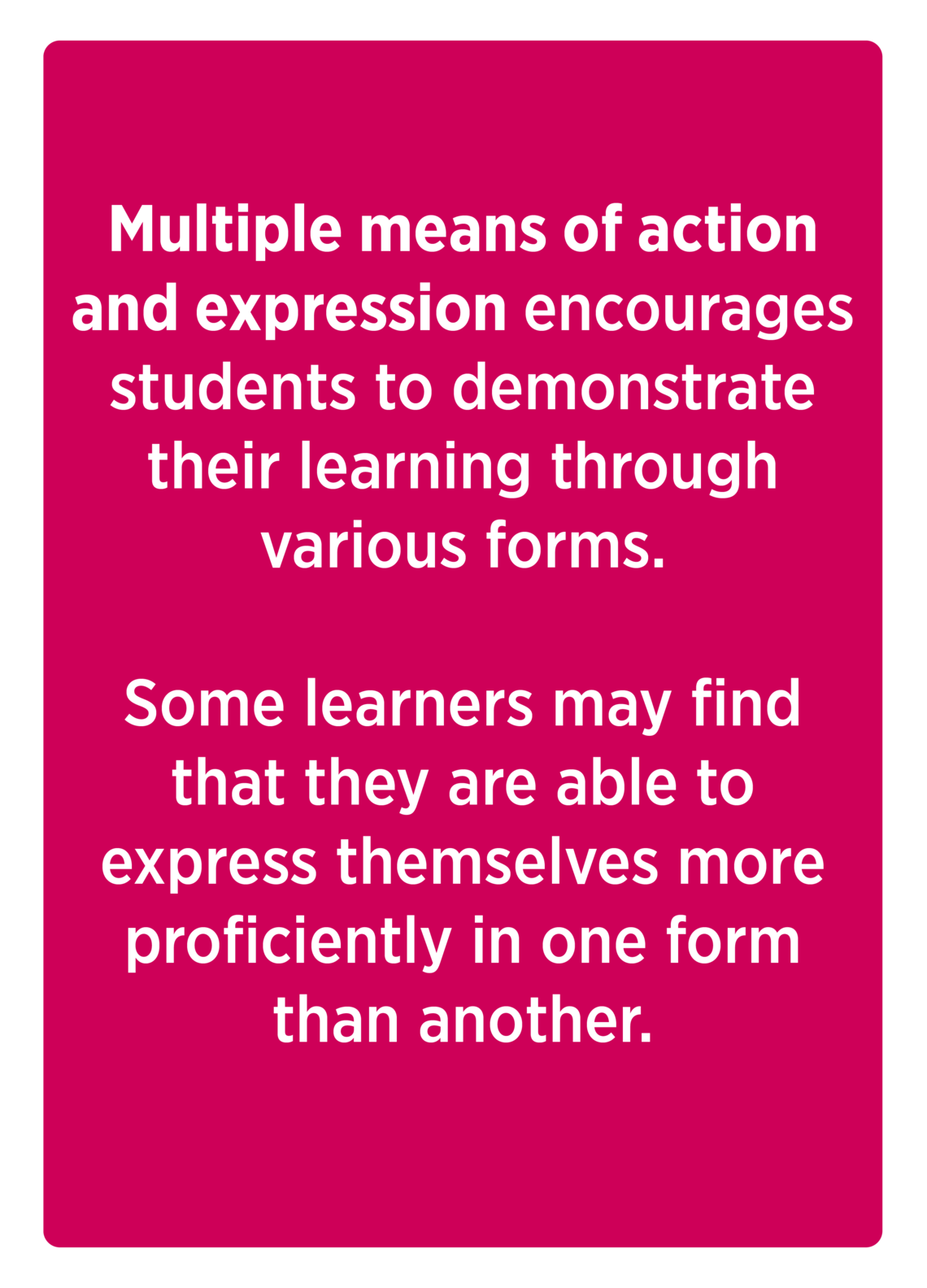
Lesson 2: Foster an inclusive and accessible learning environment
Making your online course accessible
Teaching and learning online may reveal some unexpected outcomes in comparison to face-to-face teaching. Universal Design for Learning (UDL) is a framework that guides the design of courses and learning environments to appeal to the largest number of learners. It emphasizes flexibility in how instructional material is presented, how students demonstrate their knowledge and skills, and in how they are engaged in learning. Three core principles guide this framework:
Multiple means of engagement refers to different opportunities for student involvement (e.g., interactive activities, group discussions, online discussion boards). This principle reflects the idea that students have different motivations to engage in learning. For instance, some students are highly motivated by spontaneity and innovation while others may be uncomfortable in such learning environments. Some students may seek active social learning forums while others will retreat from such environments. Students who are fully engaged in learning will be enthusiastic about applying their knowledge and will have a desire to learn more on their own. This principle also refers to offering varying levels of challenge, fostering community and collaboration, and supporting students in self-regulating their learning.
Multiple means of representation is about providing learners various ways to access and engage with course materials and information. In its simplest form, this could mean offering textbooks in audio or multimedia formats. This principle also refers to how students comprehend information in different forms, such as decoding syntax, vocabulary, notation, symbols, and disciplinary language. The goal is to support students in using multiple representations and developing fluency in traversing across them. Offering flexibility in presenting information also acknowledges differences in how learners comprehend and perceive information. For example, students with visual impairment may find print materials inaccessible, and students with diverse language, cultural backgrounds, and perceptive abilities may encounter barriers to information when instructors assume common background.
The principle also includes pedagogical approaches to a topic or concept. An instructor could decide to give a concept overview (lecture) followed by an example and an application of the concept through an in-class exercise. Other examples include statistics, case study, and expert opinion. If one approach is ineffective, a different approach may work better.
Multiple means of expression encourages students to demonstrate their learning through various forms (e.g., exams, multimedia, concept maps, papers, projects). This principle highlights executive functioning, where students apply what they learn strategically. That is, it involves finding, creating, using, and organizing information. This process can include graduated levels of support, and using tools and technology. Students may find that they are able to express themselves more proficiently in one medium than in another. It may be possible to incorporate graded assignments into a course that allows students to select alternative formats. Other opportunities for multiple means of action and expression include note-taking, in-class assignments, and feedback from different sources.
Lesson checklist
-
Conceptualize the Community of Inquiry Model
-
Apply strategies to create an inclusive learning community
-
Explain the basic principles of Universal Design for Learning
-
Apply strategies to make your course more accessible

-
How can you incorporate variety in your teaching approaches and student learning activities?
-
How might you incorporate student interaction and collaboration into your course?
-
How might technology be used to engage students in authentic learning?
-
What opportunities exist to incorporate student choice?
-
How can you encourage student self-regulation and personal coping skills?

- How can you ensure that your course materials are accessible to as many students as possible?
-
How might you present main course concepts in more than one format?
-
Does your course offer opportunities to encourage student agency?
-
What learning activities could emphasize comprehension of key concepts?
-
How might you informally gauge student understanding of course concepts?

- How might you incorporate multiple means of expression on exams?
-
What opportunities exist to incorporate multiple means of expression in assignments?
-
How might you provide opportunities for feedback?
-
What choices might you offer students regarding assignments, communication, and content delivery?
-
What course design decisions can you make to mitigate student anxiety regarding assessment?
Strategies to make your online course more accessible
Additional resources
Universal Design for Learning (UDL) is a framework that guides the design of courses and learning environments to appeal to the largest number of learners. This guide outlines the principles of UDL and provides examples of how it could be implemented in university courses.
Additional reading on the Community of Inquiry Framework from Athabasca University.



